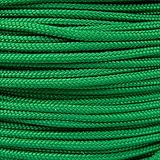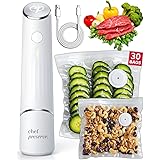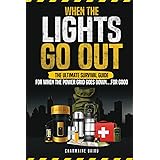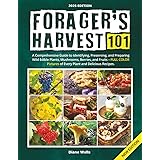The Future of Fish Antibiotics in Survival Medicine: Navigating the VFD and Preparedness
Concerns about the availability of fish and avian antibiotics for survival medical kits have frequently been raised within the preparedness community, especially with the introduction of the FDA’s new Veterinary Feed Directive (VFD). As discussed in the accompanying video by Dr. Joe Alton, understanding the true scope of this directive is crucial for those building robust disaster medical storage. This piece will delve deeper into the nuances of the VFD, the pervasive threat of antibiotic resistance, and why specific pet antibiotics continue to hold a vital, albeit carefully considered, place in long-term survival planning.
Understanding the Looming Threat: Antibiotic Resistance
The primary concern driving regulations like the VFD is the escalating crisis of antibiotic resistance, a phenomenon where bacteria evolve to withstand the very drugs designed to kill them. This resistance renders common infections untreatable, transforming minor ailments into life-threatening conditions. It has often been misunderstood that this alarming epidemic is primarily fueled by the occasional use of pet antibiotics in survival kits or even by physician over-prescription. While human misuse contributes, the reality is far more pervasive and industrially driven.
A staggering majority of antibiotics utilized in the United States are administered not to humans, but to food-producing animals. These drugs are frequently employed prophylactically or to accelerate growth, rather than exclusively for treating active infections. This widespread, low-dose exposure in livestock creates an ideal breeding ground for resistant bacteria, which can then transfer to humans through the food chain or environmental contact. It is this industrial-scale application that represents the largest single contributor to the global rise in antimicrobial resistance, eroding the efficacy of our most critical life-saving medications.
The Veterinary Feed Directive: What It Is and Isn’t
The Veterinary Feed Directive (VFD) is a regulatory framework implemented by the FDA to bring certain medically important antibiotics, specifically those administered in animal feed or drinking water, under veterinary oversight. Its core objective is to combat antibiotic resistance by curtailing the indiscriminate use of these drugs in livestock. The directive mandates that such antibiotics can only be used with a veterinarian’s authorization, issued for specific medical reasons, essentially requiring a prescription for feed-grade antibiotics.
It is critical to note that the VFD specifically targets drugs intended for use “in or on animal feed” for food-producing animals. This distinction is paramount for the preparedness community. The directive acts like a carefully constructed filter, designed to regulate the massive flow of antibiotics into the livestock industry, without directly impacting the smaller, distinct stream of medications formulated for ornamental fish or pet birds. Therefore, the common aquarium and avian antibiotics, typically sold for individual pets, are not currently classified as VFD drugs and thus remain outside its immediate regulatory scope.
CDC’s Multi-Pronged Approach to Stewardship
The Centers for Disease Control and Prevention (CDC) has established clear goals to address antibiotic resistance, emphasizing the concept of “stewardship,” which essentially means responsible management and control of these vital medications. Their number one goal, focused on decreasing the emergence and preventing the spread of resistant infections, is underpinned by three strategic objectives:
- **Implementing Public Health Programs:** This involves fostering antibiotic stewardship in both healthcare settings and the broader community, coupled with robust reporting policies to track resistance trends.
- **Eliminating Growth Promotion Uses in Animals:** A direct attack on the industrial misuse of antibiotics, aiming to remove medically important antibiotics from use as growth promoters in animals and bring all other in-feed uses under strict veterinary oversight. This objective directly informs the VFD.
- **Fostering Human Antibiotic Stewardship:** Identifying and implementing measures to ensure antibiotics are used judiciously in human medicine, prescribed only when truly necessary and completed as directed.
As clearly articulated by the CDC, two out of these three objectives relate specifically to animal agriculture. The focus is overwhelmingly on large-scale practices that disproportionately contribute to resistance, rather than the small-scale purchase of pet medications for individual preparedness. This reinforces the understanding that hobby fish and bird enthusiasts, or those stocking for survival, are not the primary targets of these large-scale public health interventions.
The “Profit Motive” and Global Comparisons
The reason for the historical overuse of antibiotics in livestock, as highlighted by Dr. Alton, is largely economic. Administering antibiotics, for reasons not entirely understood, has been observed to accelerate the growth rate of animals, bringing them to market faster and thereby increasing profitability for producers. This financial incentive has led to practices that, while maximizing revenue, inadvertently jeopardize the efficacy of antibiotics for both animal and human health.
However, this model is not universally accepted. Progressive nations like Denmark have implemented stringent regulations, banning the routine use of antibiotics on livestock unless a specific disease requires treatment. This approach demonstrates that responsible animal husbandry, devoid of prophylactic antibiotic use for growth promotion, is not only feasible but essential for global public health. Such examples serve as a benchmark for what can be achieved when health and environmental considerations are prioritized over short-term economic gains, potentially inspiring broader changes in other countries.
Common Survival Antibiotics and the VFD’s Reach
For those meticulously assembling a survival medical kit, the list of commonly recommended antibiotics for fish and avian species remains largely unaffected by the VFD. Medications such as Fish Mox (Amoxicillin), Doxycycline, Bird Biotic (Cephalexin), Metronidazole (Fish Zole), and other broad-spectrum options previously recommended for disaster storage are not currently included on the list of VFD-regulated drugs. These medications, often sourced from reputable distributors like Thomas Labs, are typically manufactured to USP (United States Pharmacopeia) grade, indicating a high standard of purity and quality comparable to human-grade pharmaceuticals.
It is important to acknowledge that some older, first-generation antibiotics like Penicillin and Tetracycline are mentioned in the broader context of veterinary drugs, but without specific proprietary brand names related to the ornamental pet trade. These particular antibiotics, having been in use for the longest time, have also been subject to significant resistance development, making them potentially less effective choices for a survival scenario anyway. Therefore, the focus should remain on those compounds with a broader spectrum of activity and a lower incidence of resistance, aligning with a more strategic approach to medical preparedness.
The Prudent Approach to Medical Preparedness
In a fully functioning modern medical system, seeking a physician’s diagnosis and prescription for any illness is always the correct course of action. This ensures proper dosage, appropriate drug selection for the specific pathogen, and minimizes the risk of side effects or contributing to antibiotic resistance. Thomas Labs and similar distributors rightly include warnings such as “Not for human use” on their products, reinforcing this standard medical protocol.
However, medical preparedness is predicated on the assumption that the modern medical system may not be available. In a long-term disaster, widespread societal disruption, or an isolated survival setting, the absence of medical professionals and pharmacies transforms the calculation. In such dire circumstances, an individual equipped with a well-researched understanding of appropriate fish antibiotics, their dosages, and potential uses in a no-other-options scenario, is considered to be acting with a medically responsible mindset. These “medical woodshed” tools, as they have been termed, are not for casual use but for life-saving interventions when all conventional avenues are exhausted. The availability of fish antibiotics in survival medicine, therefore, remains a critical component for those dedicated to comprehensive disaster readiness.











